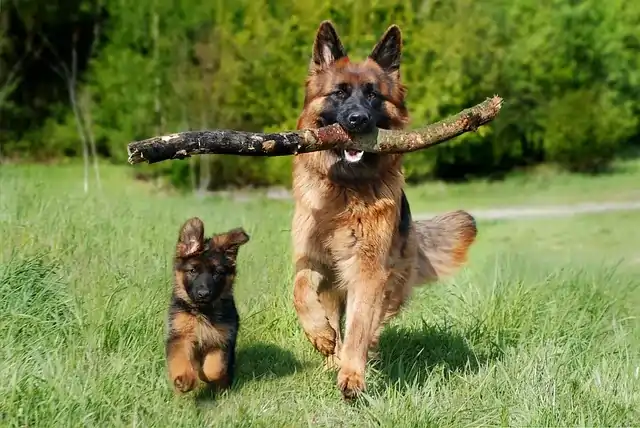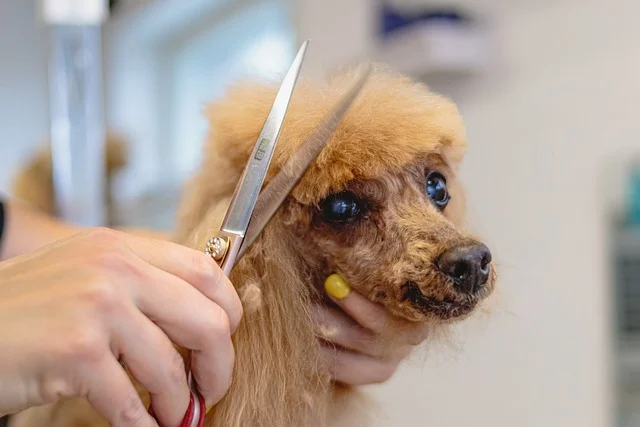
Welcoming a dog into your family is a rewarding and life-changing experience. However, it’s important to consider several factors before making this commitment. In this comprehensive guide, we’ll explore essential considerations to keep in mind when adopting a dog to ensure a smooth transition and a fulfilling relationship with your new furry friend.
Take Your Time Making a Decision
Adopting a dog is a significant decision that requires careful consideration. Take your time to assess your lifestyle, living situation, and readiness for pet ownership before bringing a dog into your home.
Consider the following questions:
- Are you prepared for the time and financial commitment of caring for a dog?
- Do you have the space and resources to accommodate a dog’s needs?
- Are all family members on board with the decision to adopt a dog?
- What breed, size, and temperament of dog would be the best fit for your family and lifestyle?
Choosing Adoption: Getting Your Pup from a Shelter

Opting to adopt from a shelter not only gives a loving home to a dog in need but also provides you with a loyal and grateful companion. Explore local shelters and rescue organizations to find your perfect match.
Benefits of adopting from a shelter:
- You’re saving a life and giving a second chance to a deserving dog.
- Shelter dogs often come spayed or neutered and may have received basic veterinary care.
- Many shelters provide information about a dog’s temperament and behavior, helping you find a compatible match.
Financial Preparedness: Can Your Family’s Wallet Handle It?
Owning a dog comes with financial responsibilities, including food, veterinary care, grooming, and supplies. Ensure that your family’s budget can accommodate the expenses associated with dog ownership before adopting.
Budgeting for dog ownership:
- Consider one-time expenses such as adoption fees, initial veterinary exams, and supplies (e.g., collar, leash, bed, food bowls).
- Calculate ongoing expenses such as food, grooming, flea and tick prevention, vaccinations, and routine veterinary care.
- Factor in unexpected expenses for emergencies or unexpected health issues.
Prioritize Spaying or Neutering
Spaying or neutering your dog is essential for population control and preventing unwanted litters. It also offers health benefits and can reduce certain behavioral issues. Discuss spaying or neutering options with your veterinarian.
Benefits of spaying or neutering:
- Helps prevent overpopulation and reduces the number of homeless pets.
- Reduces the risk of certain health issues such as uterine infections and certain cancers.
- Can help curb undesirable behaviors such as roaming, marking, and aggression.
Identification: Dog Tags and Microchipping

Proper identification is crucial in case your dog gets lost. Ensure your dog wears a collar with up-to-date ID tags and consider microchipping for added security. Keep your contact information current with the microchip registry.
Tips for dog identification:
- Include your dog’s name and your phone number on their ID tags.
- Ensure that ID tags are securely attached to your dog’s collar and are easily readable.
- Register your dog’s microchip with a reputable database and keep your contact information updated.
Grooming Essentials: Teeth, Nails, and Fur

Regular grooming is essential for your dog’s health and well-being. Brush your dog’s teeth regularly, trim their nails as needed, and maintain their coat with regular brushing and grooming sessions.
Grooming tips:
- Brush your dog’s teeth at least 2-3 times a week to prevent dental issues such as tartar buildup and gum disease.
- Trim your dog’s nails every 1-2 months to prevent overgrowth and discomfort.
- Brush your dog’s coat regularly to remove loose fur, dirt, and debris and prevent mats and tangles.
Nutrition: Keep an Eye on What Your Dog Eats

Provide your dog with a balanced and nutritious diet to support their overall health. Consult with your veterinarian to determine the best diet for your dog’s age, size, and specific dietary needs.
Tips for feeding your dog:
- Choose a high-quality commercial dog food that is appropriate for your dog’s life stage (e.g., puppy, adult, senior) and health status.
- Follow feeding guidelines provided by the food manufacturer and adjust portion sizes as needed based on your dog’s activity level and weight.
- Consider feeding your dog homemade dog treat combination of dry kibble and wet food or incorporating fresh, whole foods such as lean meats, fruits, and vegetables into their diet.
Enrichment and Entertainment: Toys and Mental Stimulation
Dogs thrive on mental and physical stimulation. Provide your dog with a variety of toys, puzzles, and interactive games to keep them entertained and mentally engaged.
Tips for providing enrichment:
- Rotate your dog’s toys regularly to keep them interested and prevent boredom.
- Offer a variety of toys with different textures, shapes, and interactive features to stimulate your dog’s senses.
- Incorporate puzzle toys and interactive games that challenge your dog’s problem-solving skills and keep them mentally stimulated.
Exercise: Fulfilling Your Dog’s Physical Needs
Regular exercise is vital for your dog’s physical health and mental well-being. Incorporate daily walks, playtime, and interactive activities to meet your dog’s exercise requirements and prevent boredom.
Tips for exercising your dog:
- Aim for at least 30 minutes to 1 hour of physical activity each day, depending on your dog’s breed, age, and energy level.
- Mix up your dog’s exercise routine with activities such as walking, jogging, hiking, fetch, and agility training.
- Consider your dog’s individual preferences and abilities when choosing activities and adjust the intensity and duration of exercise sessions accordingly.
Training: Start Early and Consistently
Early and consistent training is key to shaping your dog’s behavior and building a strong bond with them. Implement positive reinforcement techniques and enroll in obedience classes if needed to establish good manners and obedience.
Training tips:
- Start training your dog as soon as you bring them home to establish good habits and prevent undesirable behaviors from developing.
- Use positive reinforcement techniques such as praise, treats, and rewards to motivate your dog and reinforce desired behaviors.
- Be patient, consistent, and gentle in your training approach, and avoid punishment-based methods that can harm your dog’s trust and confidence.
Preventative Healthcare: Fleas, Ticks, and Worms
Protect your dog from common parasites such as fleas, ticks, and worms through preventative measures. Consult with your veterinarian about appropriate preventive medications and vaccination schedules.
Preventative healthcare tips:
- Administer flea and tick preventatives as recommended by your veterinarian to protect your dog from parasites and the diseases they can transmit.
- Follow a regular deworming schedule to prevent intestinal parasites such as roundworms, hookworms, and tapeworms.
- Keep your dog up-to-date on vaccinations to protect them from contagious and potentially life-threatening diseases such as rabies, distemper, and parvovirus.
Responsible Ownership: Never Leave Your Dog Chained Up Outdoors
Responsible dog ownership includes providing a safe and comfortable environment for your dog. Never leave your dog chained up outdoors unattended, as this can pose safety risks and lead to behavioral issues.
Tips for responsible ownership:
- Provide your dog with adequate shelter, food, water, and veterinary care to meet their basic needs and ensure their well-being.
- Keep your dog indoors as much as possible and provide them with regular opportunities for exercise, socialization, and mental stimulation.
- Supervise your dog when they are outdoors and ensure they are safely contained within a secure fence or leash to prevent them from wandering off or getting into dangerous situations.
Safety: Never Leave Your Dog in the Car

Never leave your dog unattended in a car, especially during hot weather. Cars can quickly heat up to dangerous temperatures, putting your dog at risk of heatstroke and other life-threatening conditions.
Tips for keeping your dog safe in the car:
- Avoid leaving your dog in the car altogether, especially during hot weather, even if you crack the windows or park in the shade.
- If you need to travel with your dog, ensure they are safely secured in a well-ventilated crate or restrained with a seat belt harness in the back seat of the car.
- Plan your trips accordingly and bring your dog with you when it’s safe and appropriate, or leave them at home in a comfortable and secure environment.
Affection and Bonding: Give Your Canine Pal Plenty of Love
Building a strong bond with your dog is essential for their emotional well-being and your relationship. Shower your dog with love, attention, and affection to nurture a strong and lasting bond.
Tips for bonding with your dog:
- Spend quality time with your dog through activities such as grooming, training, playtime, and cuddling.
- Communicate with your dog through positive body language, vocal cues, and affectionate gestures to strengthen your connection and build trust.
- Be patient, understanding, and responsive to your dog’s needs and emotions, and prioritize their well-being and happiness in your interactions.
Conclusion
In conclusion, adopting a dog is a significant commitment that requires careful consideration and preparation. By addressing these essential considerations before adopting, you can ensure a smooth transition and provide your new canine companion with a loving and nurturing home
